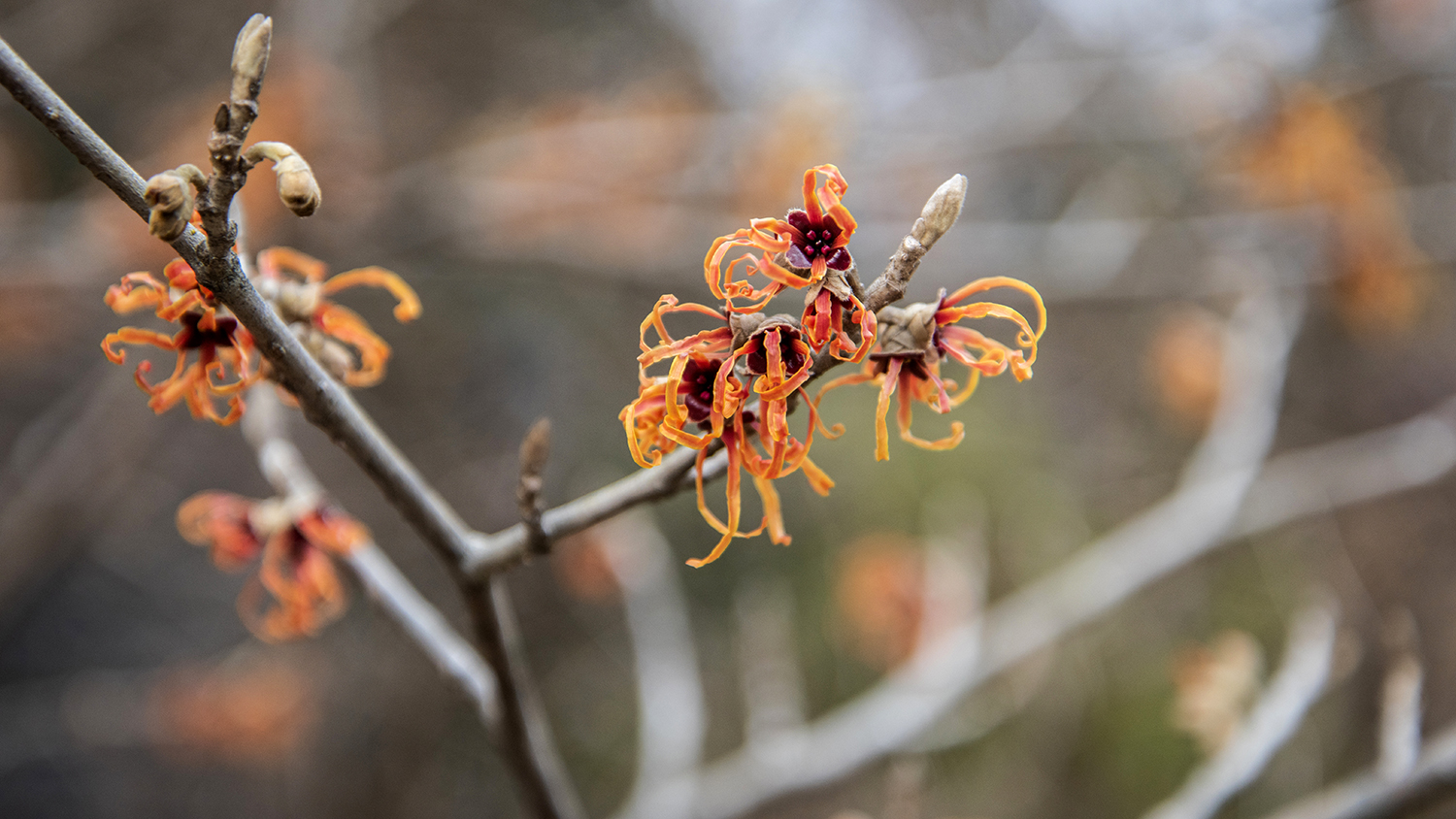
Photo by Jessica Voss.
Botanical name: Hamamelis vernalis
Common name: Ozark witch hazel
Family name: Hamamelidaceae (Witch hazel family)
Native range: Ozark Plateau in south-central North America
Location in Duke Gardens: Blomquist Garden of Native Plants
USDA Hardiness Zones: 4-8
Witch hazels (Hamamelis spp.) are a small genus of North American and Asian deciduous understory trees best known for their unusual flowers. Initially tiny and surrounded by colorful strap-like “petals” (actually bracts, or modified leaves), they eventually form dry seed capsules that “explode” with great force when ripe, flinging the seeds away from their parent tree at high velocities. Because the previous year’s fruits frequently overlap with the current year’s flowers, botanists dubbed them Hamamelis in Latin, meaning “together with fruit.”
Despite their common name, witch hazels are neither hazels (Corylus spp.) or magical—“witch” is derived from the Old English word for “pliable” and refers to the flexibility of their branches, which reminded English settlers to North America of the equally unrelated “wych elm” (Ulmus glabra). They are, however, kin to the witch alders (Fothergilla spp.) as well as the Persian ironwood, which was previously included in the genus.
Unlike the more common American witch hazel (H. virginiana), which blooms in the fall and is found across eastern North America, Ozark witch hazel blooms in the spring (vernalis” is Latin for “spring”), and wild populations are limited solely to the Ozark plateau in Missouri, Arkansas and Oklahoma. Even where their ranges overlap, the differences in bloom time makes the two species easy to tell apart, especially since it also means they do not naturally hybridize in the wild. The strap-shaped bracts of Ozark witch hazel are usually dark red or brown instead of bright yellow like American witch hazel, although many different cultivars and selections are available in the horticultural trade.
As with other witch hazels—and many other early-blooming species—Ozark witch hazel flowers are sweetly scented, making the tree a multisensory delight in February and early March. Look for H. vernalis in the Blomquist Garden of Native Plants, as well as its Asian relatives (H. japonica, H. mollis, H. × intermedia) in the Culberson Asiatic Arboretum.
